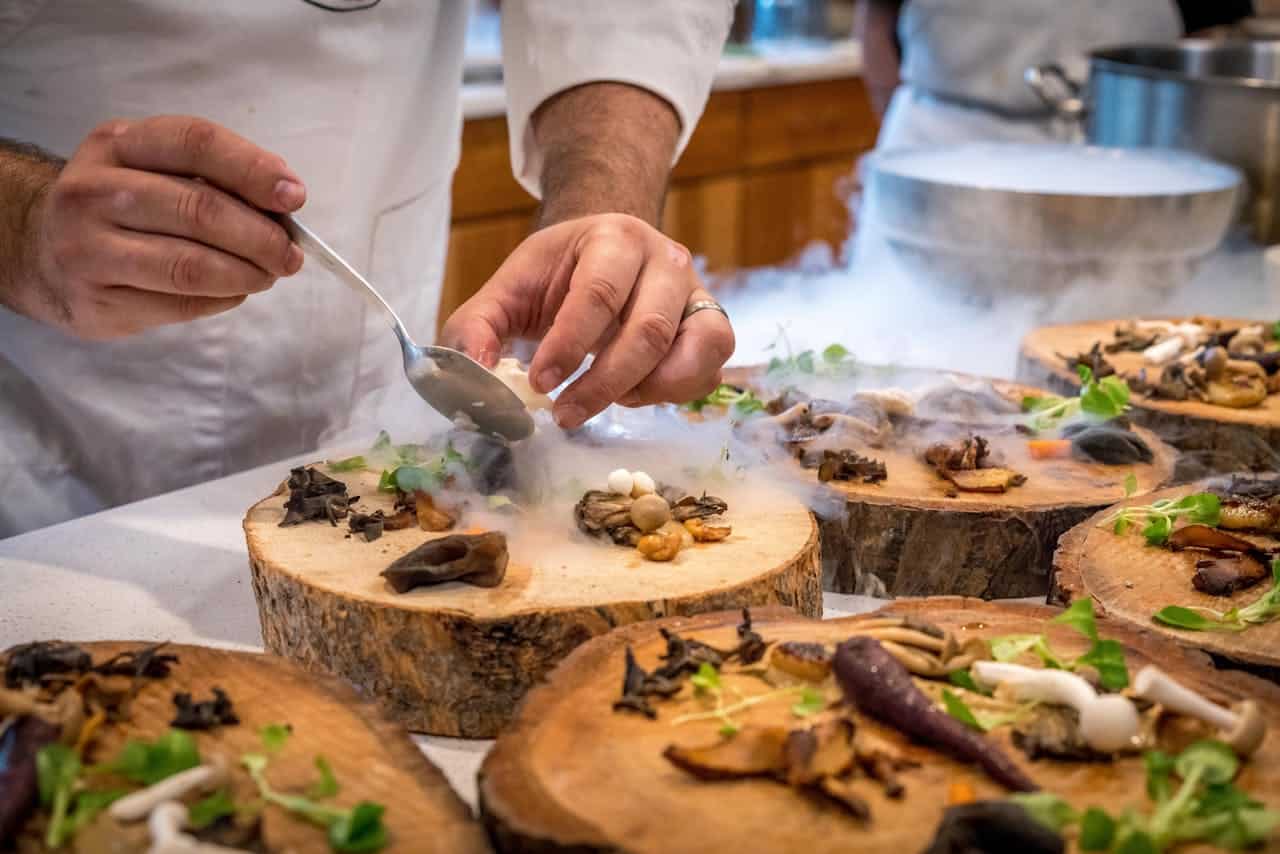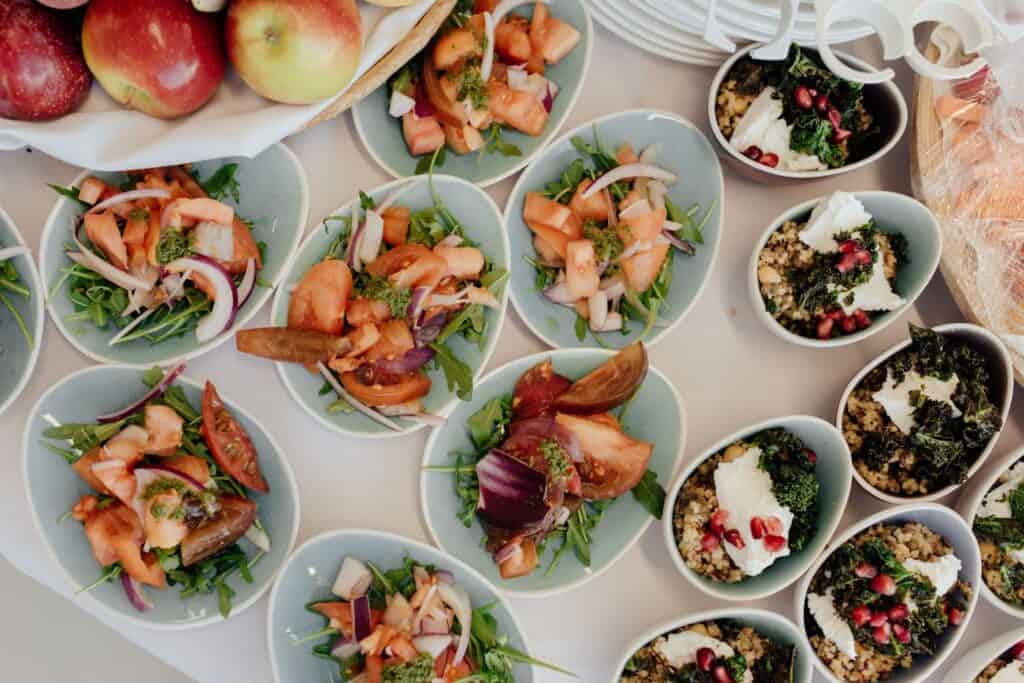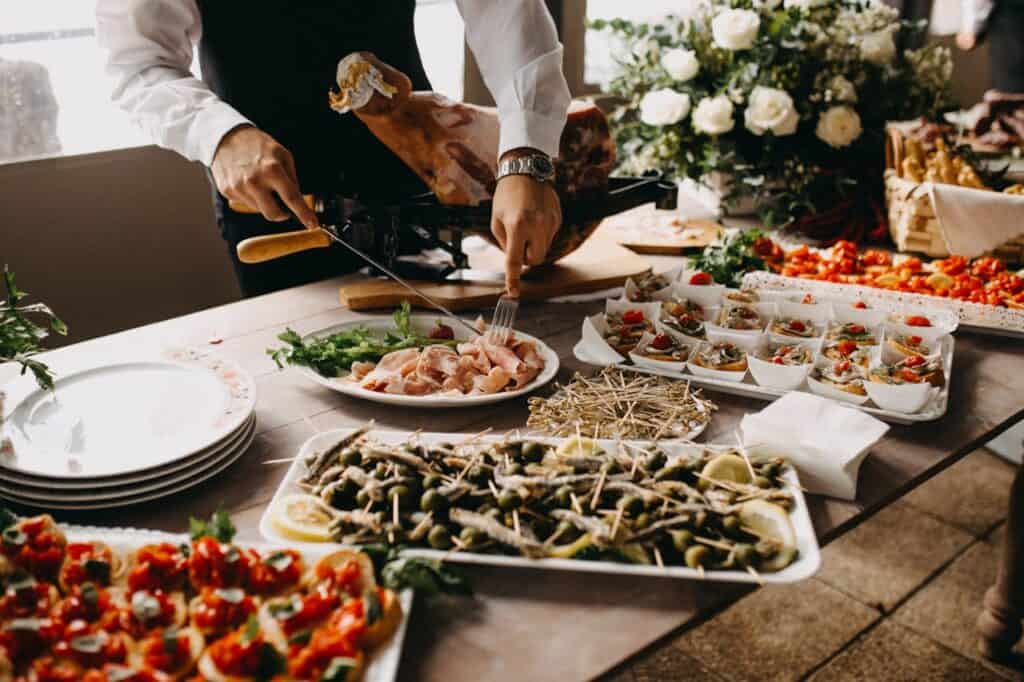
By Jermaine Thomas January 30, 2025
The presentation of a dish can hold equal significance to its flavor when we talk about cooking. Deliberate food presentation not only improves the dining experience but also creates a memorable impact on guests. Let’s examine the importance of visual food appeal and investigate different methods to enhance your catering with unique elements.
The Importance of Visual Appeal in Food Presentation
When diners first encounter a dish, their initial judgment is based on its appearance. A visually appealing presentation sets the stage for an enjoyable meal, while a lackluster display might diminish anticipation. The visual impact of food plays a crucial role in shaping perceptions of taste and quality.
Color plays a vital role in the presentation of food. Lively, vivid shades can invigorate a meal, while matching colors establish contrast, enhancing visual richness. Excessive dull colors can, however, render food unappealing. Carefully choosing and organizing ingredients contributes to creating meals that are visually appealing as well as delicious to taste.
Texture also contributes to a dish’s appeal. Combining different textures—such as crispy, creamy, and crunchy elements—can make a plate more intriguing. The arrangement of these components guides the diner’s gaze, creating a harmonious and inviting presentation.
Utilizing negative space, or purposefully leaving sections of the plate vacant, emphasizes the primary elements of a dish. This method highlights the main elements and stops the plate from looking messy.
Ultimately, investing time in thoughtful food presentation enhances the overall dining experience, making meals more memorable and enjoyable for guests.

Innovative Plating Techniques to Enhance Visual Impact
Modern chefs employ various plating techniques to create visually stunning dishes that captivate diners. Some popular methods include:
Landscape Technique: Inspired by landscape gardens, this approach arranges food in a linear, low, and long formation across the plate. It offers a natural and artistic look, enhancing the flavor and texture of the ingredients. This style can be applied to main courses, appetizers, and desserts.
Free-Form Technique: This technique enables a more casual and irregular arrangement of food. In contrast to traditional plating, where each component occupies a designated spot, free-form plating fosters imagination. Cooks employ methods such as smearing, scattering, or stacking to craft an abstract yet captivating “artwork” on a dish.
Food on Organic Materials: Utilizing natural materials such as wood, slate, and stone as plating devices lends a rustic and back-to-nature feel to dishes. This technique enhances the visual appeal and provides a distinctive dining experience.
The Nordic Look: This technique consists of cutting vegetables into ribbons or pieces and sprinkling herbs on a plate for an appearance of simple elegance. It focuses on simplicity and freshness, frequently showcasing seasonal ingredients.
Bathing Technique: In this approach, chefs bathe fish or other proteins in broth or sauce. This method adds depth and richness to the dish while enhancing its visual appeal.
By mastering these techniques, chefs create meals that are not only delicious but also visually captivating, leaving a lasting impression on their guests.
Incorporating Edible Art and Garnishes
Elevating food presentation often involves using edible art and garnishes to add flair and sophistication to dishes. These elements transform a simple plate into a visual masterpiece.
Edible Flowers: Incorporating edible flowers brings bright colors and fine textures, boosting the overall attractiveness of a dish. Flowers such as nasturtiums, pansies, and violets are not only lovely but also provide unique flavors that enhance different meals.
Microgreens: These tiny, young greens add a touch of elegance and freshness. They come in various flavors, from mild to spicy, and can be used to garnish salads, soups, and main courses.
Herb Sprigs: Fresh herbs like rosemary, thyme, or dill serve as aromatic garnishes, adding both visual interest and a hint of fragrance to a dish.
Fruit Zests and Twists: Citrus zests or fruit twists add vibrant colors and uplifting scents, improving both the appearance and flavor of the meal.
Edible Glitter: Recently, edible glitter has gained popularity beyond traditional use on desserts. It can be sprinkled on savory items like popcorn or curries to add a subtle sheen, making dishes more visually appealing.
When incorporating edible art and garnishes, it’s important to balance aesthetics with flavor. Thoughtful use of these elements elevates the dining experience, making each plate a feast for both the eyes and the palate.
The Role of Tableware and Serving Vessels
The choice of tableware and serving vessels plays a significant role in food presentation, influencing the overall dining experience. Selecting the appropriate plates, bowls, and utensils enhances the visual appeal of a dish and complements its aesthetic.
Plate Color and Shape: The color and shape of a plate affect how food is perceived. White plates are classic and versatile, providing a neutral backdrop that makes colors pop. However, colored or patterned plates can add an artistic touch, aligning with the theme of the meal. The shape of the plate—be it round, square, or abstract—also influences presentation style.
Size and Proportion: The plate’s size must match the amount of food being presented. A plate that is too big may make a meal look scarce, while a plate that is too small can seem overcrowded. Correct proportions guarantee an attractive and well-balanced display.
Material and Texture: The material of the serving vessels—ceramic, glass, wood, or metal—complements the food’s texture and theme. Serving a rustic dish on a wooden platter enhances its appeal, while a sleek, modern dish might be best presented on a glass or metal plate.
Unique Serving Pieces: Incorporating distinctive serving pieces adds an element of surprise and delight. Using a slate board for cheeses or a miniature cast-iron skillet for a dessert makes the presentation more memorable.
Through thoughtful choice of tableware and serving dishes, chefs and hosts amplify the aesthetic appeal of their cuisine, crafting a unified and captivating dining experience.

Lighting and Ambiance: Setting the Stage for Culinary Art
Beyond the plate, the environment in which food is served significantly influences its perception. Lighting and ambiance are crucial factors that can enhance or detract from the visual appeal of a dish.
Lighting: Proper lighting highlights the colors and textures of food, making it more enticing. Natural light is ideal, but when unavailable, soft, warm lighting creates a welcoming atmosphere. Harsh, direct lights should be avoided, as they cast unflattering shadows or distort colors.
Table Setting: The setup of the table, featuring linens, centerpieces, and cutlery, enhances the overall dining experience. An intentional table arrangement enhances the food display and establishes the ambiance for the dining experience.
Thematic Elements: Integrating thematic elements enhances the dining experience. Whether it’s a rustic countryside theme, an elegant fine-dining setting, or a contemporary urban aesthetic, the right ambiance enhances the enjoyment of the meal.
By curating an inviting atmosphere, hosts and chefs create a setting that enhances the impact of food presentation. This attention to detail ensures that guests remember not only the taste of their meals but also the experience surrounding them.
Conclusion
Food presentation goes beyond being merely an aesthetic preference; it serves as a crucial element of the dining experience. Concentrating on visual aesthetics, creative plating methods, edible artistry, thoughtfully selected tableware, and the perfect atmosphere, chefs and hosts craft meals that make a memorable impact. Whether at a luxury restaurant or a relaxed get-together, improving small details boosts the overall experience, making each meal seem unique.
For those in the catering business, refining food presentation skills can significantly impact customer satisfaction and business success. The right touches can turn an ordinary meal into an unforgettable one, proving that great food is not just about flavor—it’s also about presentation.